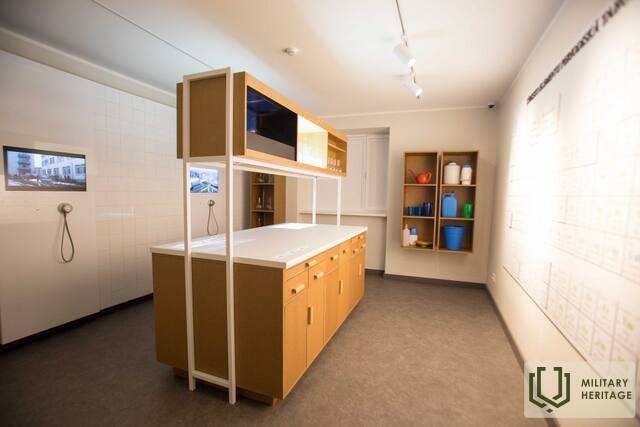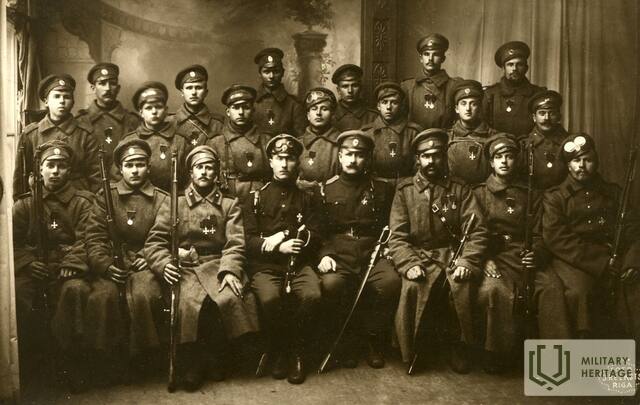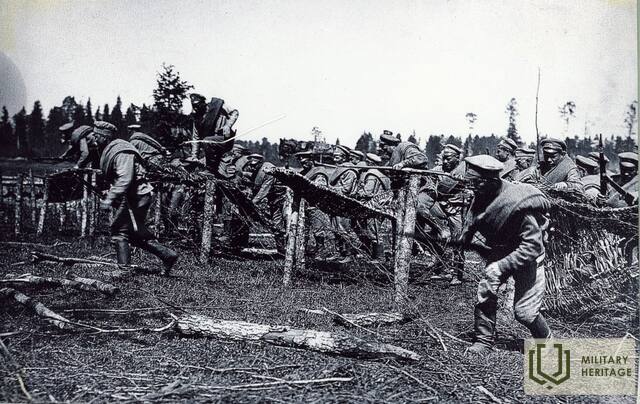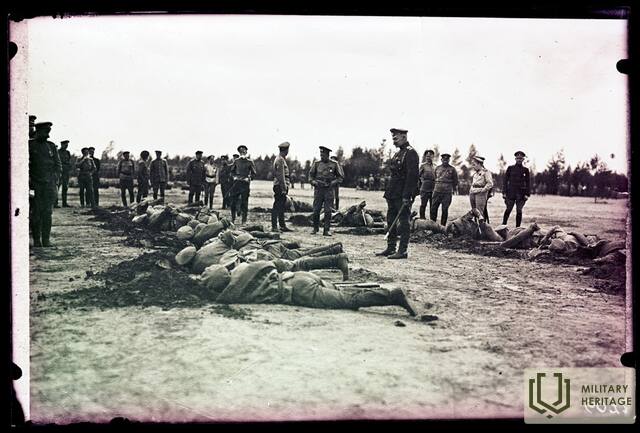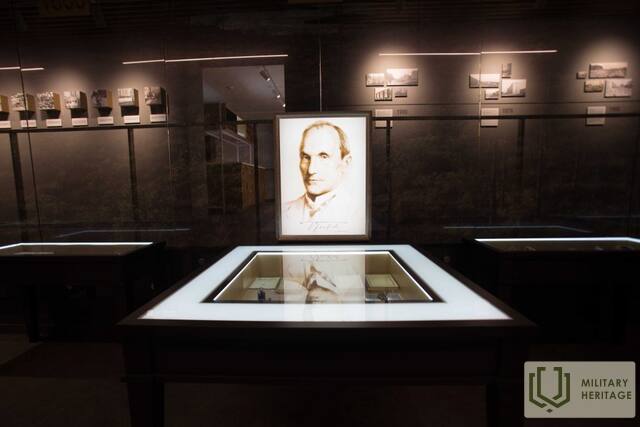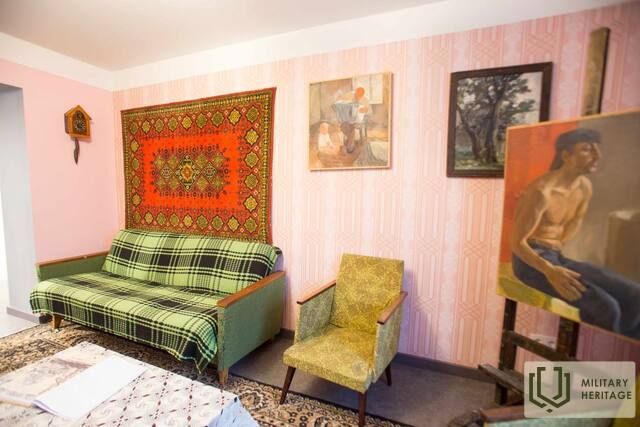Olaine History and Art Museum Muziejus

The exhibit in the Olaine History and Art Museum is about the period of Soviet occupation in Olaine. A World War I exploration route with restored elements of the fortifications has been created in the territory of the museum. On the site, where the World War I Russian Army defence line once was, a Russian soldier-type dugout has been built and a fragment of a shooting tower can be viewed by visitors. A World War I reinforced concrete fortification can be seen in Jaunolaine, at the intersection to Plakanciems. During World War I, active battles were fought between the Russian and German armies in this area. Latvian Riflemen units were involved in intelligence and various other operations. Marshy lands made it difficult to defend, but this was a very important area in Latvian military history. Olaine was formed due to the convenient location between Jelgava and Riga, where Jaunolaine is currently located. The Olaine manor was nearby. The modern day Olaine was built during the Soviet occupation, when industrial companies began their operations there.
Panaudoti šaltiniai ir literatūra:
Official website of Olaine History and Art Museum. Available: https://olainesmuzejs.lv [Viewed: 20.03.2021.].
Edukacinės programos
Kelionės laiku. 1919 m.
Programos tikslas – skatinti Lačplėsio dienos supratimą ir stiprinti naujosios kartos tautinį identitetą. Šioje pamokoje mokiniai, susiskirstę į komandas, turi galimybę nukeliauti į 1919 m. ir prisiimti dviejų priešininkų – Latvijos armijos ir Bermonto kariuomenės – vaidmenis. Naudodamiesi tinkama įranga, jie atliks įvairias užduotis, įsikurs gynybinėse pozicijose, eis žvalgyti ir statys slėptuves, kad pamokos pabaigoje nustatytų istorinį nugalėtoją. Maršrute sukurtas žiedinis pėsčiųjų takas, kuriame yra bunkeris, žeminė, artilerijos punktas ir patranka. Visos minėtos apžvalgos aikštelės yra ten, kur archeologiniai kasinėjimai rado jų buvimo vietos įrodymų. Šiame maršrute taip pat yra atminimo akmuo žuvusiems laisvės kovoje ir maketas, vaizduojantis kareivių gyvenvietę Pirmojo pasaulinio karo metais. Visame take yra ženklai su instrukcijomis Brailio raštu, ir viskas pritaikyta neįgaliesiems vežimėliuose, kad žmonės taip pat galėtų tyrinėti ir mėgautis šia vieta.
Palieskite praeitį. Supratimas šiandien
Programos tikslas – skatinti mokinius domėtis praeitimi, jos įvykiais, ieškoti sąsajų su dabartimi. Peržiūrėkite iš viso 5 trumpus filmus apie gyvenimą ir kasdienybę Latvijoje XX amžiuje. antroje pusėje. Susipažinkime su „laiko kapsulėje“ siunčiamais daiktais, jų kilme, gamintoju..., taip pat sužinokime, kaip ir kur ieškoti gamintojo. Ir tada, atlikdami užduotis ir žaidimus, įvertinkite ir palyginkite tuos laikus su šiandiena. Ši programa nėra apie karą, bet ji neabejotinai susijusi su karo pasekmėmis Latvijos žmonių kasdieniam gyvenimui ir ekonomikai.
Susijusi laiko juosta
Susijusi istorija
Apie Latvijos lankininkus Olaines apylinkėse
Prisiminimuose atsispindi Latvijos lankininkų kasdienybė Olaine apylinkėse. Aprašomos ne tik gyvenimo sąlygos, bet ir įprasta užduotis – priešininko pozicijų žvalgyba.
Gynybinių pozicijų formavimas.
Aprašyme apskritai nagrinėjama mūšio lauko įtvirtinimo problema. Jis sukurtas remiantis I pasaulinio karo patirtimi ir situacija, kai būtina organizuoti didelius įtvirtinimų kūrimo darbus.




